NIL
Some good, some bad in era of college athlete empowerment
(Editor’s note: This is the third installment of a multi-part series by MTN Sports on the current state of college athletics. For Part 1, click here. For Part 2, click here.) BOZEMAN — Student-athletes have never been more empowered than they are in this current era of collegiate athletics. With name, image and likeness (NIL) opportunities, […]
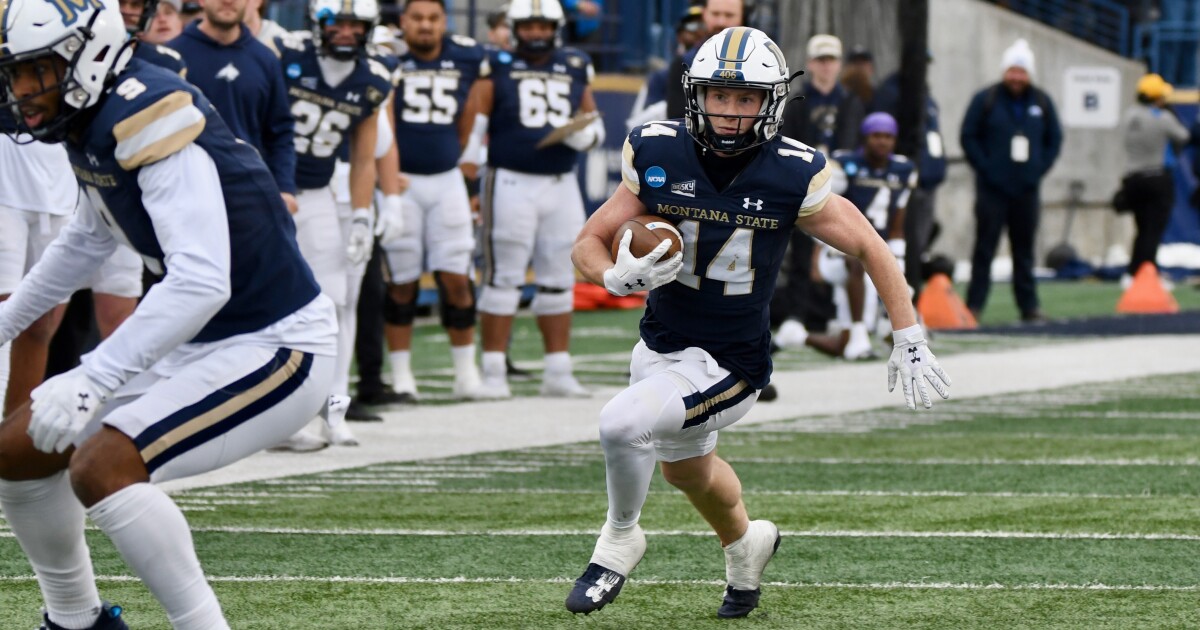
(Editor’s note: This is the third installment of a multi-part series by MTN Sports on the current state of college athletics. For Part 1, click here. For Part 2, click here.)
BOZEMAN — Student-athletes have never been more empowered than they are in this current era of collegiate athletics.
With name, image and likeness (NIL) opportunities, looser academic eligibility requirements and next to no transfer restrictions, collegiate athletes have more options and can earn as much as someone is willing to pay them. While the effects of the new rules — or lack thereof — are felt in all sports, football is one of the largest drivers of change.
“I think college football’s almost turning into a huge free agency type of landscape, and then there’s good in that and there’s bad in that,” Montana State receiver and return specialist Taco Dowler told MTN Sports. “Having a little bit of extra cash obviously helps. I mean, everyone wants a little bit of extra cash, but we don’t have the amounts that are going to change your life, necessarily, at this level.
“So, learning how to budget, learning how to save, just with a little bit of extra cash, I think is huge. For the (offensive) linemen, I know it’s big for grocery bills. For me, it’s nice to take my girlfriend out on a nice date once a week or whatever that may be.
“And, you just can’t go wrong. You have to be smart with the money that you do have. And I think that us not getting a bunch of money is nice, but us having a little bit of buffer is also good to learn.”
Dowler, a Billings native who has become an All-American punt returner for the Bobcats, is a fan favorite in Bozeman. Fans can be seen wearing “Taco Tuesday on a Saturday” baseball caps or foam tacos on their heads or holding “Taco Time” signs.

Slim Kimmel / MTN Sports
After games, including MSU’s Sonny Holland Classic that concluded the Bobcats’ slate of spring practices in April, the affable athlete is often swarmed by kids wanting photos and signatures.
“I feel like I’m a normal guy until people come up and want to take a picture with me, and I’m like, oh, I guess they think I’m cooler than I actually am,” he deadpanned. “But, it’s really an honor, and it’s really cool that I’ve been put in a position where I can be a role model for kids and show them what to do and how to do it the right way — and that ages all the way up to freshmen that come in here to play with us. And it really is a huge blessing more than anything.”
Dowler is happy to acquiesce and pose for photos as long as fans are lining up, but the small-town fame has also provided him with a platform to benefit. As a marketable star on one of the biggest brands in FCS football, Dowler has earned plenty of NIL offers.
He — like former Montana State quarterback Tommy Mellott, who was recently selected by the Las Vegas Raiders in the 2025 NFL Draft — has turned down some NIL deals that focused solely on him so more members of the team could get a share of the pot.
“(Football is) the best team-sport game you could possibly do, and I think just the closer you are, the more you love your brothers on the team, the better you’re going to perform,” said Dowler.
“I don’t think there’s any, like, jealousy or anything. Everyone’s like, ‘Oh, that’s sweet, dude,’” Bobcats defensive tackle Alec Eckert said. “I mean, we’re all on the same team, we’re all trying to win games and stuff, and if one of your friends gets a cool deal, you feel like you’re part of it, too.”
If Dowler is a poster child demonstrating the potential good of NIL, Eckert is just as strong of an advocate for the transfer portal. After spending three years at Washington State, the Lewiston, Idaho, native transferred to Montana State prior to last season.
“I think, for me, it was a little bit different just because there was no bad blood or anything (at Washington State). It wasn’t like I was leaving with a bad attitude or anything. It was just that school was getting expensive,” said Eckert, who was a walk-on at Washington State. “And I talked to my coach there, and he was pretty good friends with (Montana State head coach Brent Vigen), and he called coach Vigen up for me, and he helped me get recruited here.”
“It’s been the best decision I’ve ever made,” Eckert added. “I mean, I’ve made friends for life and brothers for life on this team and couldn’t be happier with the community and being in Bozeman and being a Montanan.”

Slim Kimmel / MTN Sports
Eckert is one of only eight transfers currently featured on Montana State’s online roster (which does not yet list quarterback Justin Lamson, who is joining MSU from Stanford). On the other hand, the Bobcats lost at least 14 players to the transfer portal after last season’s run to the FCS national championship game.
All-Big Sky Conference performers Scottre Humphrey, Conner Moore, Rohan Jones and Andrew Powdrell left Bozeman for FBS programs New Mexico, Michigan State, Arkansas and UNLV, respectively.
Eckert didn’t criticize any of his former teammates and said the ability to transfer and profit off NIL earnings is generally a good thing but admitted “there’s some disadvantages, too.”
“You see a lot of selfishness and guys, I think, maybe leaving for the wrong reasons and making decisions based solely off finances when they don’t realize that maybe they had a better thing where they were,” Eckert said. “They might not have been making as much money, but they were on a better football team, or they were with better people, and people actually cared about them.”
NIL deals at major college football programs can be worth hundreds of thousands of dollars or more. The market is even higher for quarterbacks — around $4 million for the top players, according to CBS Sports — and former Tennessee QB Nico Iamaleava somewhat infamously had a reported NIL dispute with the Volunteers that ultimately led to his transfer to UCLA.
FCS athletes aren’t earning near that ballpark, but, according to a source involved in the NIL marketplace, there’s a “big four” of Montana State, Montana, North Dakota State and South Dakota State that are playing at a different level than their contemporaries.
“None of us are getting $250,000 or $2 million like Nico or whatever,” Dowler said. “It’s just different. It’s hard to grasp how much money that actually is.
“And there’s offers obviously coming in for some people that decide to stay here, and I think that says a lot about your character and your morals.”
NIL
Oklahoma State VP and Athletics Director Chad Weiberg Announces Revenue Sharing Sports
STILLWATER – Oklahoma State University President Dr. James Hess and vice president and athletics director Chad Weiberg were at Oklahoma State University-OKC for the final OSU/A&M Board of Regents meeting for the fiscal year. Part of the meeting had Weiberg advising the regents that Oklahoma State, in accordance with the House vs. NCAA settlement approval […]
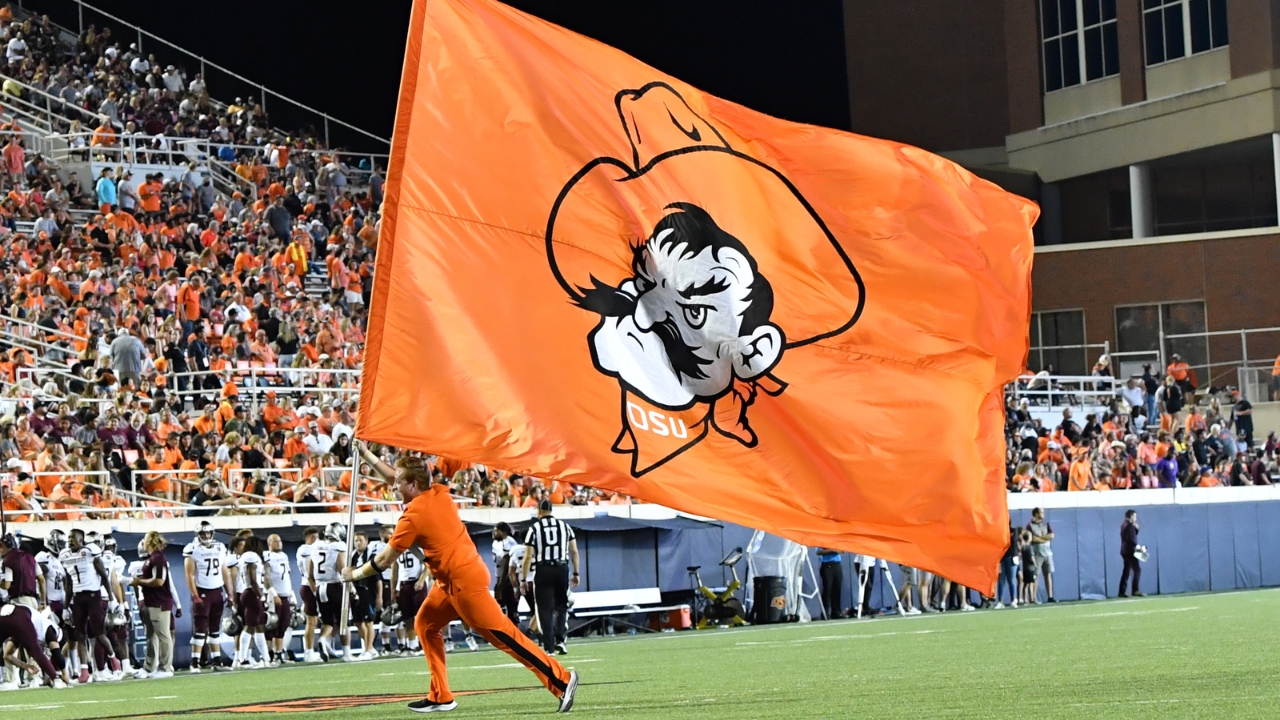
STILLWATER – Oklahoma State University President Dr. James Hess and vice president and athletics director Chad Weiberg were at Oklahoma State University-OKC for the final OSU/A&M Board of Regents meeting for the fiscal year. Part of the meeting had Weiberg advising the regents that Oklahoma State, in accordance with the House vs. NCAA settlement approval and the start of the new fiscal year on July 1, would pay revenue sharing to student-athletes in their seven ticketed sports. Those are football, men’s basketball, women’s basketball, wrestling, women’s soccer, softball, and baseball. Weiberg’s social media mesaage said other sports would get additional scholarship funding. The House vs. NCAA settlement and the corresponding decisions have the total amount that schools will pay athletes at $20.5 million.
Again, the most critical part of all this is not what sports will be included, but what the financial split will be. Most Power Conference schools are pushing 70-75 percent of the annual total to football. At most schools it is the major revenue producer and the sport that foot most of the bill for athletics. Generally, men’s basketball gets 10-15 percent, then any others share in the remaining 10-20 percent of the total.

Jerod Hill/OSU Athletics
Cowboy football will get the biggest percentage or revenue share, but how much?
Oklahoma State football head coach Mike Gundy and his staff as well as men’s basketball head coach Steve Lutz and his staff were heavily invested in the NCAA transfer portal in making over the rosters in their programs. That can be costly.
NIL will continue and will be critical in other sports not included in revenue sharing, but any NIL deal valued over $600 to the student-athlete will be reviewed by the new College Sports Commission and their software assist program NIL-Go. The power conferences including the Big 12 have agreed to abide by the CSC decisions.

Robert Allen – Pokes Report
Chad Weiberg
The regents won’t meet again until September, so gauging from what was done on Thursday with the University of Oklahoma Board of Regents and the announcement of the sports that OU would engage in revenue sharing, it made sense Oklahoma State would advise their regents. The action did not need regents approval.
Some schools like Georgia and Baylor have gone public with the percentages they are paying major sports, but I wouldn’t hold my breath on getting that from Oklahoma State. Honestly, they shouldn’t announce that and they should do all they can to keep individual student-athlete “salaries” secret. That really is proprietory information that you don’t want in the hands of your rivals.
NIL
NCAA women's athletes appeal blockbuster $2.8 billion NIL decision over legal violations
The landmark antitrust settlement that approved a $2.8 billion payout for ex-NCAA athletes brought out objections from over a dozen groups of former players. Among them are eight women’s players who filed an appeal claiming that the fair share of the Name, Image, and Likeness (NIL) money was being taken from female athletes. Former soccer, […]

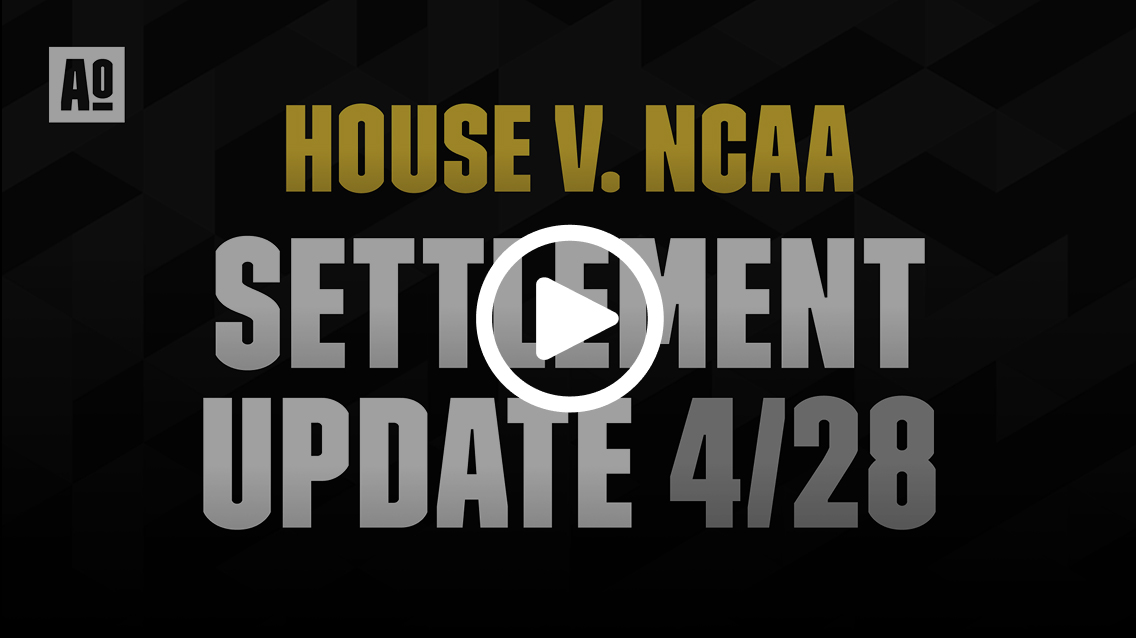
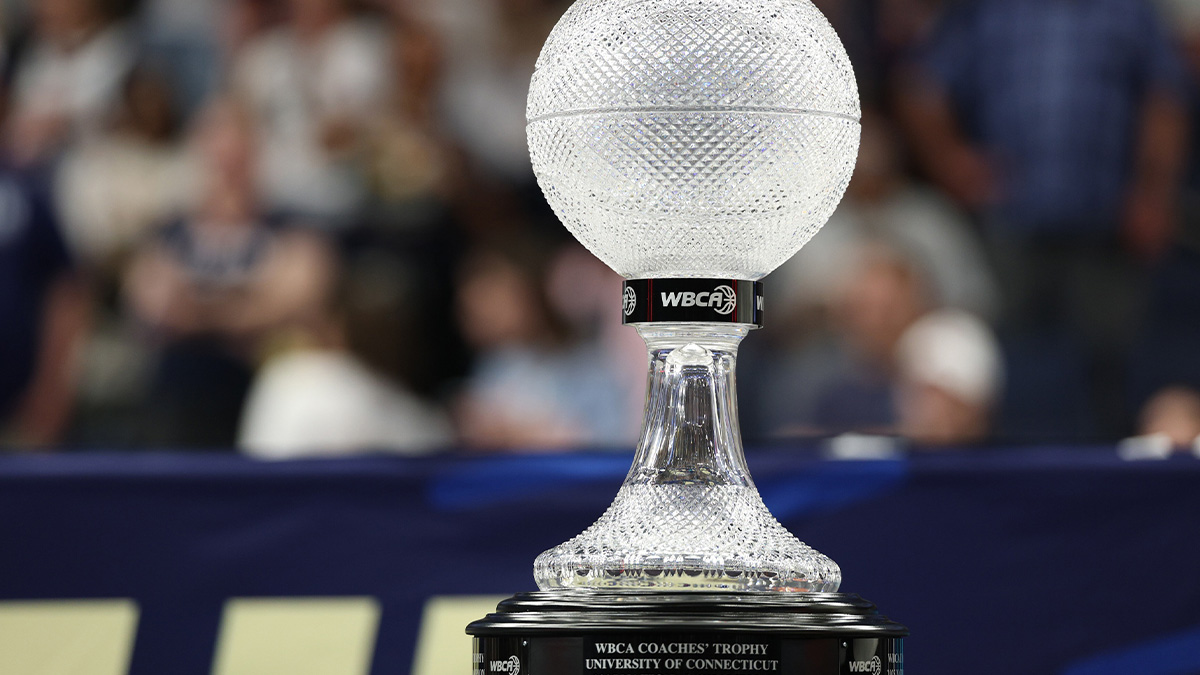
The landmark antitrust settlement that approved a $2.8 billion payout for ex-NCAA athletes brought out objections from over a dozen groups of former players. Among them are eight women’s players who filed an appeal claiming that the fair share of the Name, Image, and Likeness (NIL) money was being taken from female athletes.
Former soccer, volleyball, and track players opposed the proposed settlement split, which was set to send up to 90% of the funds to men’s basketball and football players alone. The athletes include Vanderbilt’s Kacie Breeding, Virginia’s Kate Johnson, and College of Charleston’s Lexi Drumm, Emma Appleman, Emmie Wannamacher, Riley Hass, Savannah Baron, and Elizabeth Arnold.
The attorneys who filed on the athletes’ behalf in the 9th Circuit Court of Appeals spoke out in defense of their clients and their case. The reasoning for the appeal came down to Title IX violations, which bans gender-based discrimination in schools in the U.S. and legally requires them to provide equitable opportunities to all on campuses.
“We support a settlement of the case, just not an inaccurate one that violates federal law,” the statement told ESPN. “The calculation of damages is based on an error to the tune of 1.1 billion dollars. Paying out the money as proposed would be a massive error that would cause irreparable harm to women’s sports.”
Article Continues Below
The attorneys argued that the broadcast rights money would’ve had to be split equitably between men’s and women’s sports if it were being paid out during their college careers in the past under Title IX laws, and he maintains that the same standard should be followed now with the retroactive payments.
“Title IX was deliberately ignored,” they continued. “The parties and court acted like it was already addressed when it clearly was not. Complying with Title IX was a problem in this settlement, so they just chose to ignore it. That can’t stand.”
The appeal won’t halt payments to current NCAA athletes, which are set to begin on July 1. However, former players will have to wait for their share of the back pay until the case works its way through the legal system, which could take months, if not years, in the complex appeals court.
NIL
Urban Meyer Says Big Ten’s Passed SEC, Small Schools Will Be ‘Feeder’ Programs
The Big Ten’s recent success at the top could push it past other top conferences PublishedJune 13, 2025 7:07 PM EDT•UpdatedJune 13, 2025 7:07 PM EDT Facebook Twitter Email Copy Link Urban Meyer has better perspective than almost anyone on the differences and divide between smaller, Group of Five schools and power programs. From head […]

The Big Ten’s recent success at the top could push it past other top conferences
Urban Meyer has better perspective than almost anyone on the differences and divide between smaller, Group of Five schools and power programs. From head coaching positions at Bowling Green and Utah, to then Florida, the NFL and back to Ohio State University, Meyer’s done it all.
So when he talks about the future of the college football landscape, it’s worth listening.
Meyer earlier this week discussed his concerns over the distribution of talent on “The Triple Option” podcast with Mark Ingram and Rob Stone. Specifically, that developing talent at smaller schools won’t pay the same dividends as it did when he was coaching.
READ: Urban Meyer Roasts Lincoln Riley At USC, Forgets Recent Ohio State History
“They become the feeder system for the big boys,” he explained. “It’s still beautiful football. The MAC, I coached there for two years, it’s fantastic because everybody had the same players. So it was really a coaches league. Some leagues you have the best teams are so much better than the other teams. But what happens (now) … the reality is you’re going to develop a player and he’s going to leave.”
It’s hard to argue.
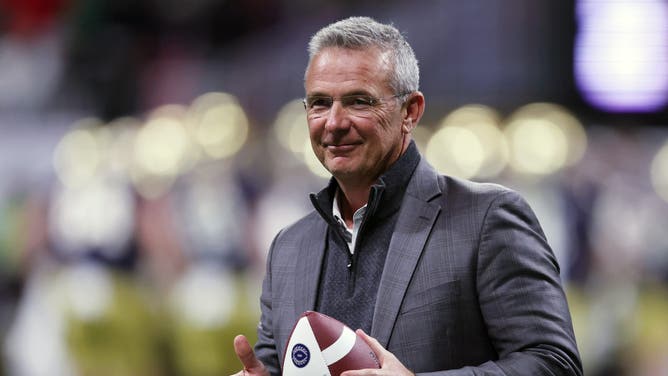
Jan 20, 2025; Atlanta, GA, USA; Urban Meyer looks on during the second half the CFP National Championship college football game at Mercedes-Benz Stadium. Mandatory Credit: Brett Davis-Imagn Images
Urban Meyer Talks Big Ten, SEC Rivalry
The NIL era has created the “feeder” system, where small programs now serve as an effective minor league program for bigger teams.
If say, a Bowling Green type program recruits well, finds a promising high schooler, develops him as a freshman and/or sophomore, it’s now become a near certainty that an Alabama, USC, or Michigan will come calling soon afterward. Unrestricted transfers have it easier for players to find better financial opportunities and more national television exposure.
And it’s hard to argue against players taking those opportunities. After all, any student or employee would jump at the chance to improve their financial or career prospects if available.
Meyer wasn’t done there.
In a second interview, part of the “Another Dooley Noted” Podcast, Meyer said he thinks the Big Ten Conference has passed the SEC in terms of top-flight quality.
“Well, you know what the SEC’s done? It’s raised the level,” he explained. “But the Big Ten has passed the SEC at the upper part. If you would have told me that 10 years ago, I would have said it’s not even close.”
The Big Ten has won the last two National Championships, something Meyer didn’t believe was possible when he started coaching in Columbus.
“When I first got to the Big Ten, even Shelley said, ‘What in the world? This is a slow man’s game up here,’ and I like to think that the Buckeyes really changed that. Then everyone else started investing in their schools,” Meyer said. “And started recruiting the best player, not just the footprint. As a result, the Wolverine team two years ago was one of the best teams I’ve seen. The Buckeyes team this year is one of the best I’ve ever seen. You’re seeing Penn State, and some of these teams have great success.”
There’s no arguing that the Big Ten has closed the gap, but SEC fans will say it’s going to take more than two years, and more teams will have to show they’re legitimate contenders before they’ve fully become the best conference. Not to mention that the SEC’s depth is unique, even among Power 5 conferences.
How will Michigan, Ohio State, Penn State, Oregon and USC stack up this season against Alabama, Georgia, Texas, Ole Miss and South Carolina? The answer to that question will go a long way towards proving Meyer right. Or wrong.
NIL
College World Series: How blue blood Oregon State overcame Pac-12 collapse to return to Omaha as independent
It was never going to be easy. The Oregon State baseball program — despite its status as a blue blood and arguably the top operation in the sport this century — faced an uphill battle from the moment the Pac-12 collapsed. When the Beavers stared elimination in the eyes five times this postseason, they were […]

It was never going to be easy. The Oregon State baseball program — despite its status as a blue blood and arguably the top operation in the sport this century — faced an uphill battle from the moment the Pac-12 collapsed. When the Beavers stared elimination in the eyes five times this postseason, they were no strangers to adversity. Right at home with their backs against the wall, they rattled off victories in each of those do-or-die contests to punch their ticket to Omaha.
Superheroes. That’s what coach Mitch Canham called his players ahead of their opening game at the 2025 College World Series.
“I really want more of the story to be out,” Canham said. “I don’t want walls around our clubhouse. I would like just pillars so people can see in and understand what they went through in its entirety this year and how special it really is. That was the prayer from the get go: Let’s make this thing so challenging. Let’s do something that no one else has ever done.
“That gives them the opportunity to go out there and transform college athletics.”
Oregon State goes independent
The grueling road back to Omaha began well before Nelson Keljo threw the first pitch on Valentine’s Day. The opening chapter in this team’s story hit the paper in the summer of 2023 when eight schools, following USC and UCLA from the year prior, announced their intentions to depart from the Pac-12.
Only Oregon State and Washington State went homeless in the landscape-altering wave of conference realignment. Both universities patched together plans for the two-year grace period in which they control the Pac-12’s assets and continue to rebuild the league. For baseball purposes, the Cougars packed their bags for the Mountain West as temporary members. The Beavers paved their own path and became the only Division I Independent for the 2025 season.
 Independents to reach NCAA Tournament since 2000
Independents to reach NCAA Tournament since 2000
|
2025 |
Oregon State |
TBD |
|
2012 |
Dallas Baptist |
Lost in regional |
|
2004 |
Miami |
Reached CWS |
|
2003 |
Miami |
Reached CWS |
|
2001 |
Miami |
Won national championship |
Going conference-less in an era of college athletics where media rights deals reign supreme, leagues boast as many as 18 teams and the chasm between the haves and have-nots only continues to widen was a major risk, yet it paid off.
Transfer portal ravages the Beavers
The transfer portal gutted Oregon State’s athletic department following the Pac-12’s demise. Football and women’s basketball were among the hardest hit, and their results last season plummeted. The football team’s win percentage dropped from 61.5% to 41.7%. Women’s basketball miraculously returned to the NCAA Tournament but did so at just over .500 on the year.
The Oregon State baseball brand was so strong, however, that Canham used the portal to his advantage rather than his detriment and built a roster that posted a better record than the 2024 squad. In from Washington came shortstop Aiva Arquette, who turned down larger NIL packages because, in his words, he wanted to win. The projected first-round MLB Draft pick has been the best bat in the lineup and is a walking highlight reel defensively.
2025 MLB Draft rankings: Top 30 players in class, including Eli Willits, Jamie Arnold, Ethan Holliday and more
R.J. Anderson

Perhaps most importantly, Canham convinced nearly all of his most important players from a year ago to stick around rather than look for a new program, star outfielder Gavin Turley and stalwart catcher Wilson Weber chief among them.
“One of the biggest things I want to point out is with all of this going on with NIL, transfer portal, the amount of money that can be had in the draft, you name it, these guys all chose to be at Oregon State,” Canham said. “That means a lot about who they are as men and where their values lay, how much they care about that place and that brotherhood. It warms my heart that I get to go be a part of that.”
Beavers attack brutal, road-heavy schedule
In an anecdote that defines Oregon State’s struggle the last two seasons, players and coaches recall earlier this season when the team bus never showed up on travel day. Players and coaches scrambled to find enough cars to drive themselves nearly two hours north to the Portland International Airport for one of their countless road series.
By the end of the regular season, the games they played on that trip accounted for some of the 35 for which they suited up away from Goss Stadium at Coleman Field. The Beavers held just 19 games, in contrast, at the nation’s oldest continuous ballpark before the start of regional play.
“I’ve been saying it all year,” said Freshman All-American starting pitcher Dax Whitney, who is set to take the mound in Friday’s College World Series opener. “I think we’re more prepared than anybody to go do this thing. We’ve been handling adversity all year, and we welcome it all the time. I think we’re better trained than anybody in the country to go do this thing.”
Oregon State’s strength of schedule ranks No. 33 nationally, per D1Baseball. That is not too shabby for a program that did not have the luxury of playing consistent weekend series against power conference competition. Road battles with tournament-caliber opposition and a couple of preseason events with premier programs boosted the résumé and ensured the Beavers got enough tests in before postseason play. But it was a drag.
At one point, the Beavers even reached a mutual agreement with Portland to cancel one of their midweek matchups due to the scheduling demands. Canham’s team had just arrived back on the mainland from a four-game swing at Hawai’i when it was scheduled tens of hours later to depart for a neutral-site battle against Iowa in Des Moines. Rather than play eight games in 10 days, Oregon State took a much-needed breather.
It worked wonders, as they won the first two games against the Hawkeyes and tied the last, shoring up a top-eight national seed in the process and guaranteeing home-field advantage through the super regional round.
Long wait for home games pays off
While teams across the nation competed in their conference tournaments, Oregon State held a three-day fan appreciation weekend of sorts with open scrimmages, autograph sessions and even a community movie night. Accustomed to their constant trips up and down Interstate 5 to the PDX airport and night after night in hotel rooms, the Beavers suddenly found themselves in the early stages of an extended home stand.
Only once in the regular season did Oregon State play more than four straight games at home. Opponents simply would not make the trek to Corvallis to play in one of college baseball’s most intimidating parks. The NCAA sent four squads to the home of the three-time national champions for regional play, though, and another in the super regional round. The Beavers strung together eight consecutive games in their home digs.
Program legends Jacoby Ellsbury, Darwin Barney and Nick Madrigal were among those on hand over the last two weekends. Football coach Trent Bray was a ringleader of the constant chants and rhythmic clapping that echoed throughout the legendary grounds, nestled between campus buildings and an old railroad line. Record crowds packed both permanent and temporary seats on a daily basis as Oregon State inched closer to the College World Series.
“I’ve had a lot of other coaches come in and go, ‘Wow, it’s really like this out here, huh?'” said Canham. “Hearing coaches that are coming from the East Coast. Butch Thompson said that when he came in a couple years ago. Link (Jarrett) said it when he was here. ‘Wow, this place is pretty special.’ There’s no doubt about it. That’s why I wish everyone could live it for a little bit of time.”
The Beavers played the maximum number of games across the Corvallis Regional and Super Regional, needing to bounce back from a loss in the regional opener and a defeat in Game 2 of the super regional series with Florida State. They won the ones that mattered most, like they did in 2006 and 2018 when they became one of just two teams this century to lose their College World Series opener and proceed to win the national championship.
It is almost as if Oregon State is most comfortable when the adversity is at its strongest. There is a good chance it will strike again in the final stanza of the Beavers’ hunt for national championship No. 4.
Frankly, they wouldn’t have it any other way.
NIL
Kentucky exploring adding Entertainment District near Kroger Field
Could an entertainment district be coming soon to Kentucky’s campus? The university is at least going to explore the idea as it looks for ways to grow revenue in the new age of college athletics. At yesterday’s UK Board of Trustees meeting, UK Athletics submitted a request for information (RFI) to develop an entertainment district […]
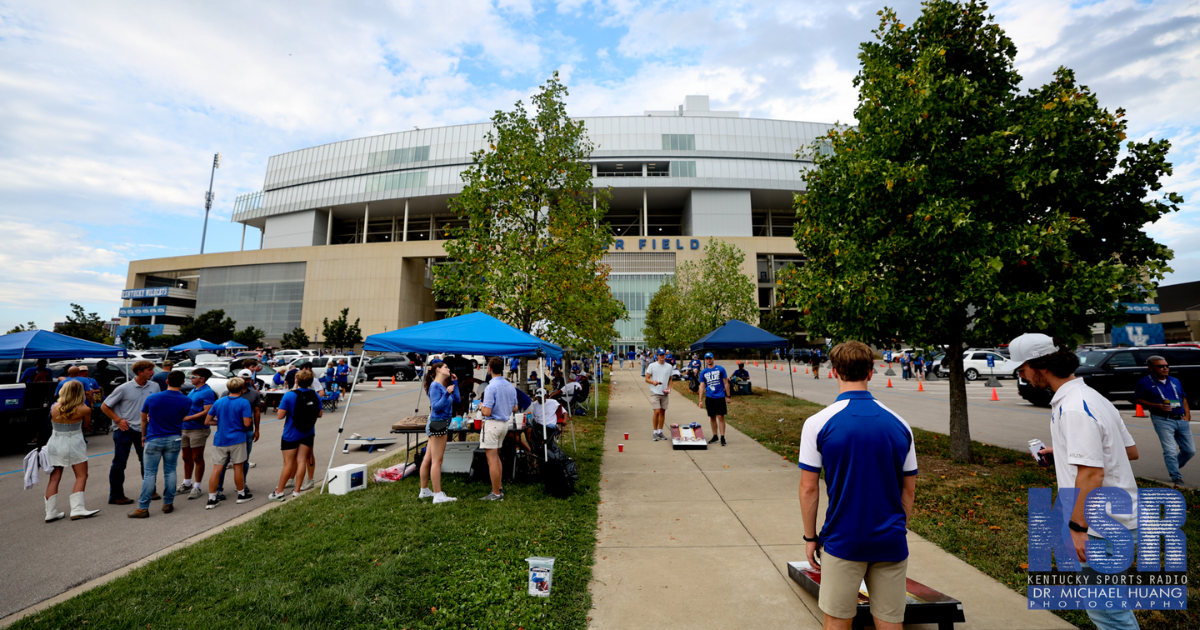
Could an entertainment district be coming soon to Kentucky’s campus? The university is at least going to explore the idea as it looks for ways to grow revenue in the new age of college athletics.
At yesterday’s UK Board of Trustees meeting, UK Athletics submitted a request for information (RFI) to develop an entertainment district on campus, which could include concepts such as restaurants, hotels, and other entertainment options. The request was part of a larger proposal for $110 million worth of investments over the next few years, which was approved today by the Board of Trustees. Although a location was not mentioned in the presentation, the district would presumably be on the south side of campus, adjacent to Kroger Field, Kentucky Proud Park, the Wendell & Vickie Bell Soccer Complex, and John Cropp Stadium.
Athletics director Mitch Barnhart told BBN Tonight’s Maggie Davis that the entertainment district, or “fan zone,” as he called it, would be similar to those in professional sports cities. He specifically mentioned the Deer District outside the Fiserv Forum, which he and Kentucky fans who made the trip to Milwaukee got a firsthand look at during the first and second rounds of the NCAA Tournament in March. The Deer District is an indoor-outdoor sports, retail, and entertainment hub built on 30 acres, at the center of which is a large plaza, where, in 2021, 65,000 fans gathered to watch the Bucks’ NBA Championship run. The district includes several bars, restaurants, shops, and even an outdoor beer garden. As someone who went there more than once during that weekend, it’s pretty awesome.
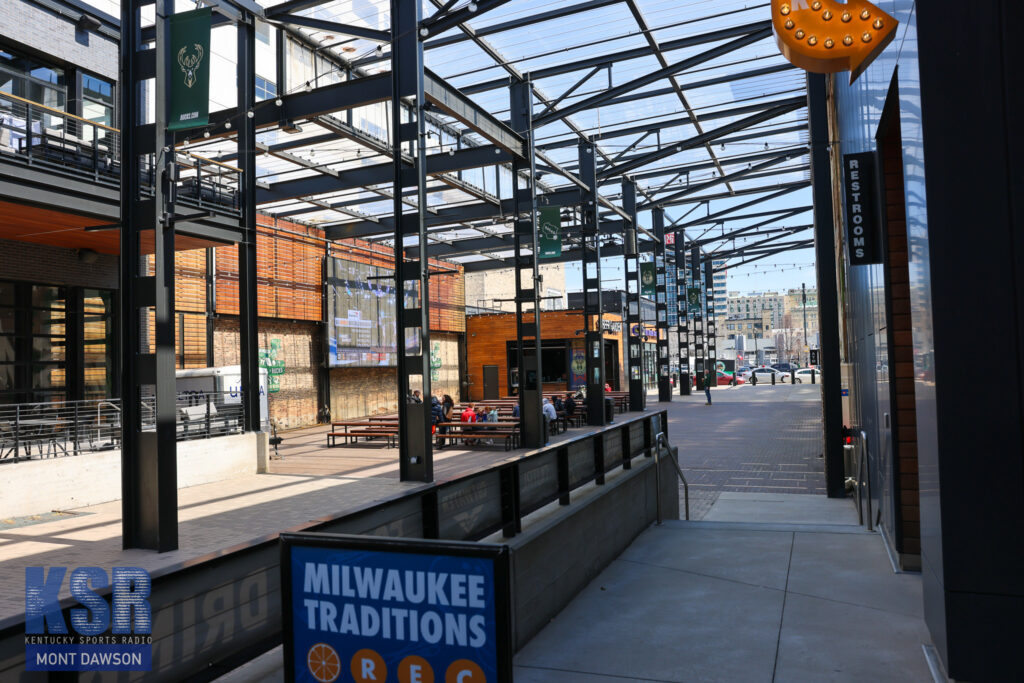

Other schools have already announced plans for entertainment districts near their football stadiums, most notably Tennessee. The 175,000 square foot Neyland Entertainment District will include a 240-room hotel with 60 additional condos, retail, restaurants (including one with a rooftop), a conference center, and a pool with a terrace. The area will tie together Neyland Stadium and Food City Center. Kansas is also building the Gateway District, a new entertainment and lodging district surrounding Memorial Stadium.
Where exactly would Kentucky’s entertainment district be located? There are some intriguing options around Kroger Field. That could further cut into the tailgating areas; however, now that schools can distribute up to $20.5 million to their athletes this upcoming year (and increasingly more in the years after that), Kentucky needs all the money it can get. That’s the primary reason that over the next year, UK Athletics will transition to Champions Blue LLC, a non-profit holding company designed to give the department more flexibility to unlock new revenue streams through public-private partnerships and potentially other transactions, such as real estate. Maybe that real estate includes more property around the stadium for the entertainment district?
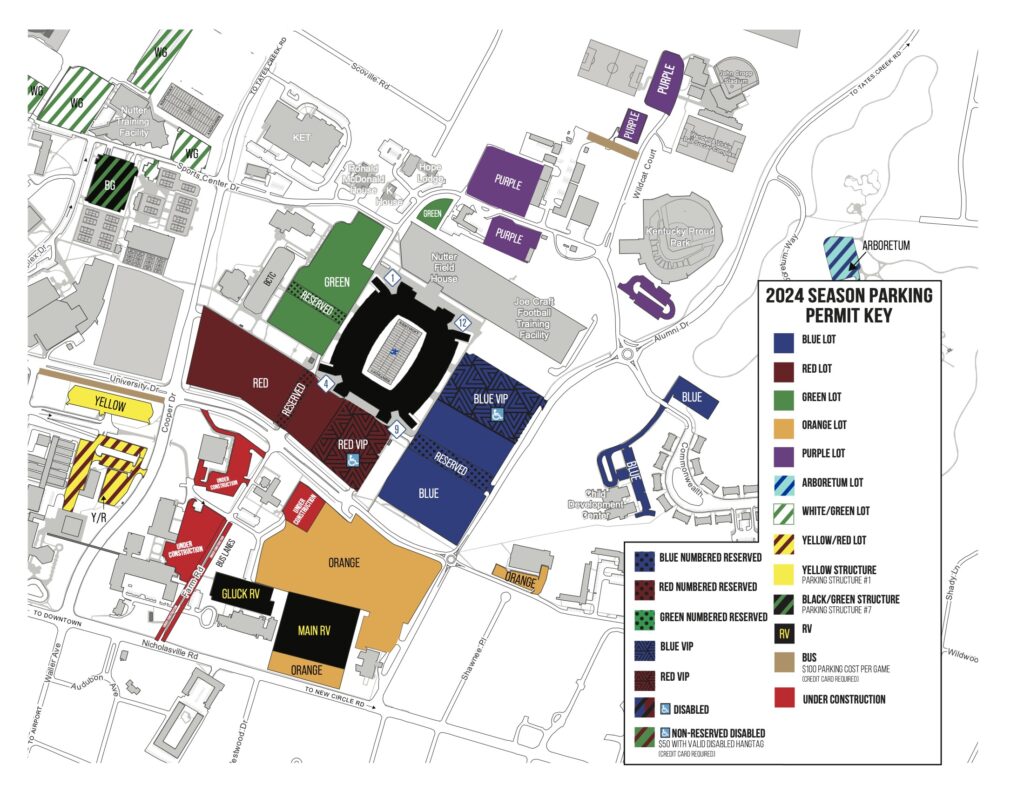
Now that the request for information has been submitted, UK can start exploring some options. As much as we all love tailgating, UK is only making money off parking passes and the REVELxp VIP tailgate setups (which I can’t imagine have been selling like hotcakes). Creating a new area near Kroger Field where fans can eat, drink, and even stay, with the athletic department getting a piece of the pie through partnerships, is just smart.
Imagine having a hotel room right next to the stadium on a big gameday, or even during basketball season, the district being used for watch parties for away games and the SEC and NCAA Tournaments. It would be awesome.
Renovations coming to Kroger Field
Another part of the $110 million investment is $36 million for Kroger Field. Thirteen million of that will go toward maintenance, $18 million for renovations to the corner suites, and $8 million for the initial design of a West End Zone Club space and wi-fi improvements.
“Obviously, you have to continue to maintain and repair the stadium,” Barnhart told Maggie Davis. “For safety reasons, making sure that all the components, the stairwells, ramps, those kinds of things, that there’s not anything that’s going to put our patrons at risk, so that’s important.
“The other piece is just the fan amenities that allow us to bring new revenue streams, to be able to do some things differently in our suites, really, really important. Those are priorities. What things, what decisions do we make that allow us to create revenue streams or be more efficient, or make sure that we’re prioritizing our fan experiences the right way?”
UK Athletics also requested $5 million for renovations to the soccer and softball facilities. Kentucky will host the SEC Softball Tournament in 2026.
NIL
Chris Petersen talks Shedeur, NIL & the future of College Football
THE HERD WITH COLIN COWHERD Trending MLB NFL Gold Cup UFL INDYCAR NASCAR LIV NBA NHL PGA NCAAFB 1
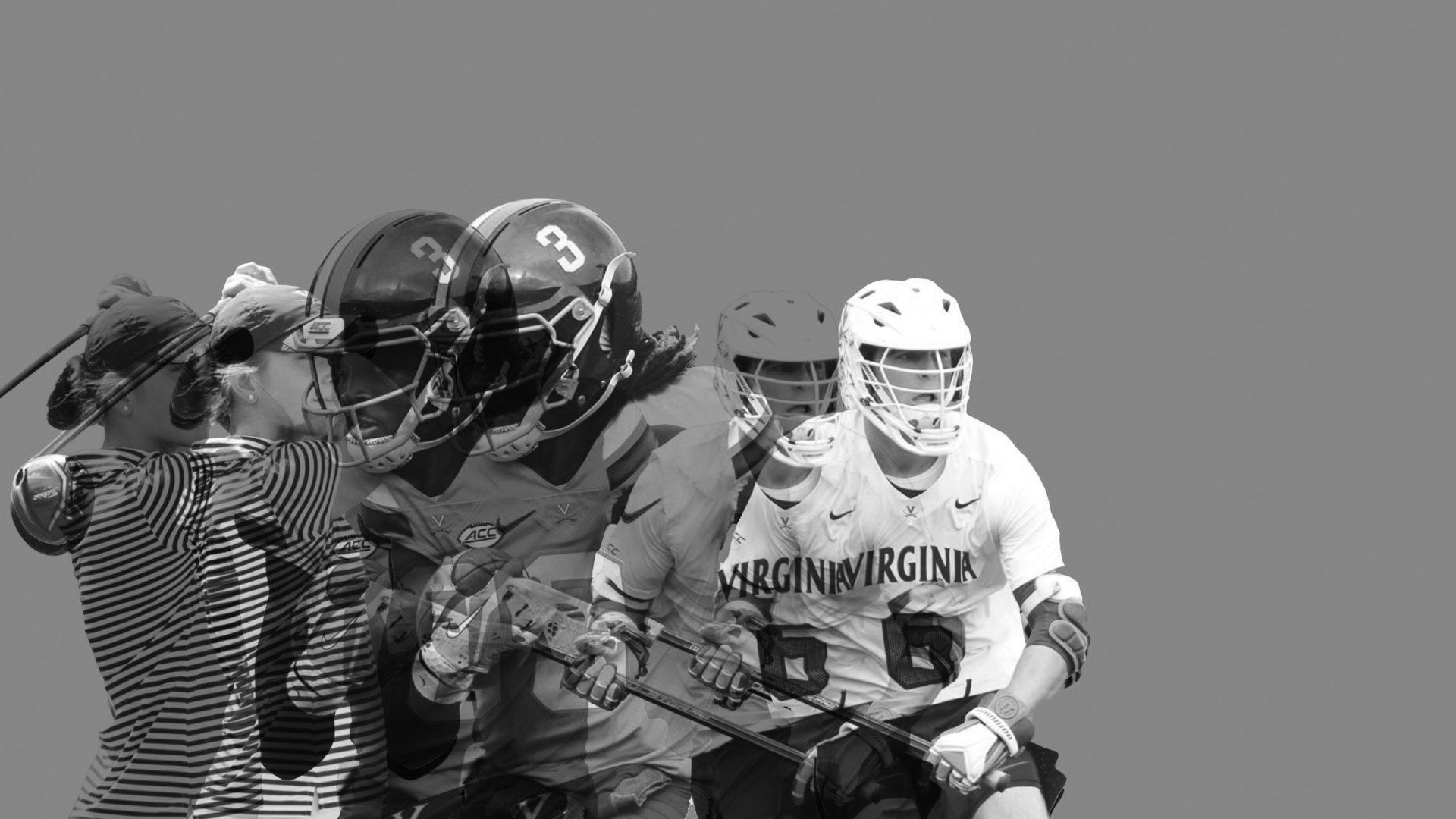
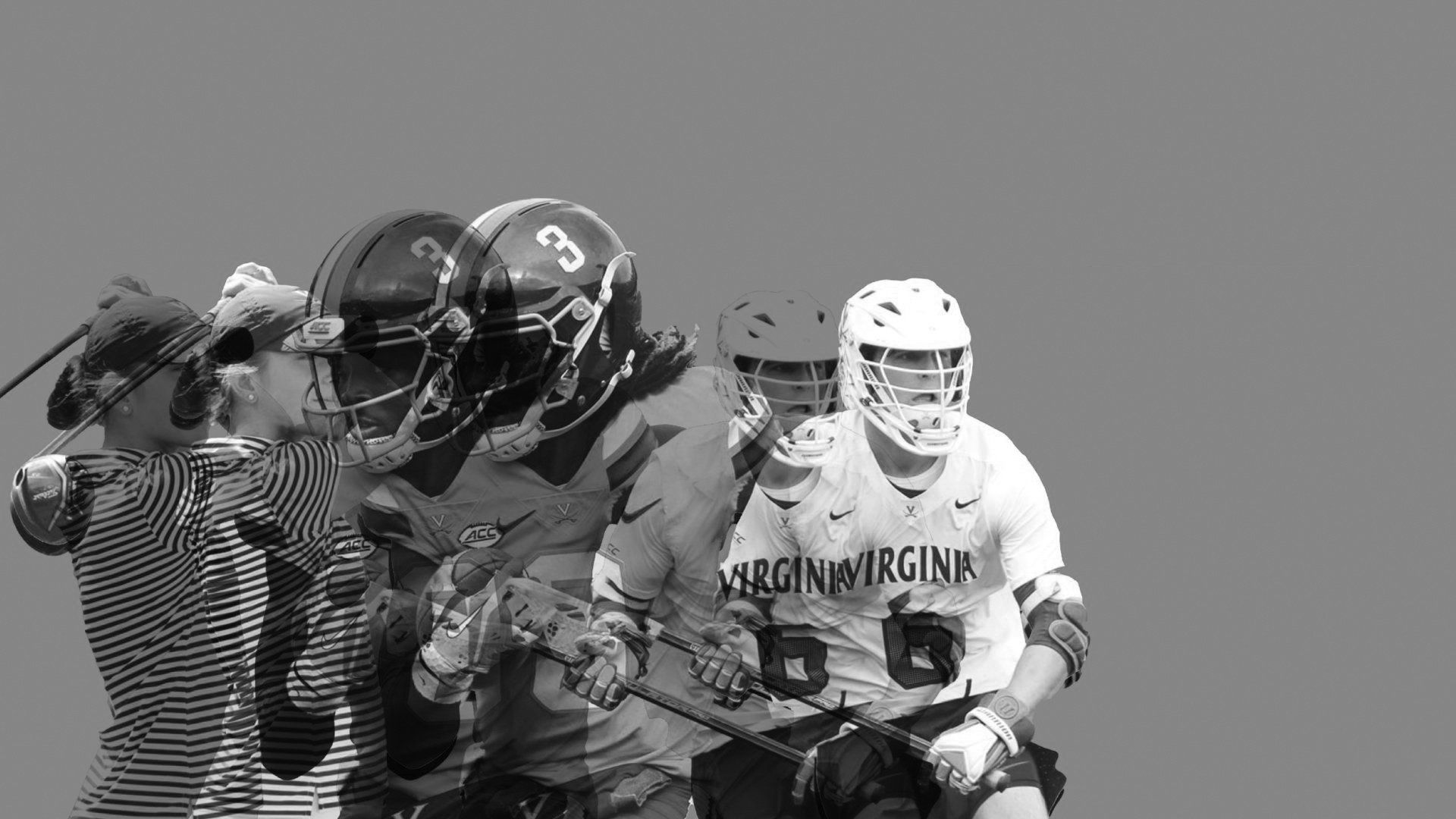
THE HERD WITH COLIN COWHERD
Trending
MLB
NFL
Gold Cup
UFL
INDYCAR
NASCAR
LIV
NBA
NHL
PGA
NCAAFB
-

 Health1 week ago
Health1 week agoOregon track star wages legal battle against trans athlete policy after medal ceremony protest
-

 College Sports2 weeks ago
College Sports2 weeks agoIU basketball recruiting
-

 Professional Sports1 week ago
Professional Sports1 week ago'I asked Anderson privately'… UFC legend retells secret sparring session between Jon Jones …
-

 NIL3 weeks ago
NIL3 weeks ago2025 NCAA Softball Tournament Bracket: Women’s College World Series bracket, schedule set
-

 Professional Sports1 week ago
Professional Sports1 week agoUFC 316 star storms out of Media Day when asked about bitter feud with Rampage Jackson
-

 Rec Sports2 weeks ago
Rec Sports2 weeks agoScott Barker named to lead CCS basketball • SSentinel.com
-

 Rec Sports2 weeks ago
Rec Sports2 weeks agoJ.W. Craft: Investing in Community Through Sports
-

 Motorsports2 weeks ago
Motorsports2 weeks agoRockingham Speedway listed for sale after NASCAR return
-

 NIL3 weeks ago
NIL3 weeks agoGreg Sankey: ‘I have people in my room asking, why are we still in the NCAA?’
-

 Motorsports2 weeks ago
Motorsports2 weeks agoNASCAR Penalty Report: Charlotte Motor Speedway (May 2025)
































